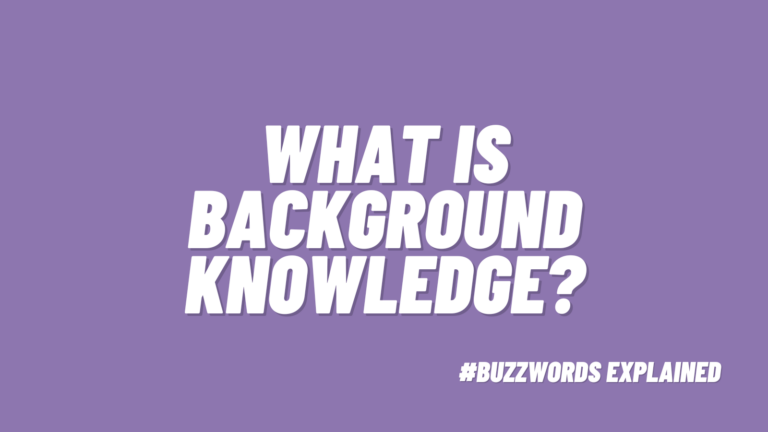How do we help our students become savvy consumers of digital media? Many students can already access a huge range of content via social media and the Internet, yet often their online lives are not rich in authoritative sources or high-quality reading materials. Digital libraries are a powerful way for educators to help teach students how to find, evaluate, and use digital content—an essential skill as online materials and sources continue to grow at an astonishing rate.
As a former teacher and technology coordinator and as a current EdTech entrepreneur and leader, I’ve helped thousands of schools across the country use digital libraries to change the dynamic of learning. Used well, digital libraries can help educators teach and students learn in exciting new ways. In other cases, technology can detract from, rather than enhance, instruction and practice.
With this in mind, here are my top tips, insights, and recommendations to help you build the perfect digital library.
1. Think student libraries, not school libraries.
Kids shouldn’t have to race to the book bin to grab the only copy of a favored title—and they shouldn’t have to race to the computer to check out the only digital copy, either. With digital, every student can have their own library. Look for digital library options that allow all students to read the same book simultaneously to maximize student choice and engagement.
2. Expand reading beyond language arts.
In many schools, reading and language arts teachers have their own classroom libraries, while content-area teachers have only shelves of textbooks and the occasional class trip to the school library.
With digital, every classroom in the building can have its own giant library—often without any added cost. Better still, since digital books can “travel” between classrooms, students can have a seamless reading experience across social studies, science, and language arts, helping them to build strong cross-curricular connections.
3. Remember 1:1 digital devices are not required.
Digital libraries can be highly effective even without a 1:1 model. With just a few computers or tablets, teachers can set up reading stations that students can rotate through during small-group instruction.
In addition, if your digital library solution is browser based (instead of requiring installed software or specific hardware), students can read on any device, including cell phones, video game consoles, or even smart TVs.
4. Extend reading beyond the school day.
Digital libraries present a unique opportunity for schools to partner with community organizations. Students can read digital texts before and after school at the public library, YMCA, Boys and Girls Club, community center, or any other location where they have Internet access.
Since research has shown that access to books is often more important to student reading than socio-economic status, these community partnerships can help boost student achievement—which, in turn, strengthens the local community.
5. Don’t eliminate print materials.
This may seem like an odd piece of advice in an article about digital libraries, but most standards require students to work confidently with both print and digital materials. Aim for your print and digital libraries to work together and ultimately enhance each other.
6. Avoid animations and other distractions in digital texts.
While it may be tempting to seek out digital texts that use pop-ups, games, animations, and other “fun” features to engage students, there is some evidence that these distractions result in shallow reading. Digital texts should be designed to help students focus on reading.
7. Find effective ways for students to engage with the text.
Although animations can be distracting, there are a lot of interactive features that can enhance the reading experience. Seek out digital options that have helpful tools that let readers highlight, draw, annotate, write journals, and cite sources.
8. Use digital materials for read alouds.
First, forget investing in expensive big books: With a digital library, any book can be projected to serve as a big book. Even older students report that having their teacher read aloud is one of their favorite reading activities, and digital texts allow even young adult books—which are almost never available in big-book format—to be used for classroom read alouds.
Second, digital options with built-in audio mean students can enjoy read alouds anytime, even when a teacher or family member isn’t available. For students whose families have low literacy levels, recorded audio may be the only way for parents/guardians to read books with their children and actively support their education.
9. Support English Learners and their families with multiple language options.
A digital library can be a powerful resource for English Learners, especially if it includes titles in other languages or dual-language texts. A built-in dictionary will allow English Learners to quickly look up unfamiliar words and build vocabulary, while recorded audio can provide auditory models of correct syntax and grammar within the English language. (For this reason, look for digital texts that use recorded audio of real people, not stilted computerized voices.)
Digital texts in other languages, such as Spanish, also make it possible for family members with limited English proficiency to read with their children. In many cases, digital dual-language texts can also give parents/guardians the opportunity to build their own English skills!
10. Go beyond books.
A digital library doesn’t have to be limited to chapter books. It can include graphic novels, illustrated and picture books, photos and informational texts, and even news articles. In particular, news articles can help spark children’s curiosity about the world, build background knowledge about a wide variety of topics, and strengthen social-emotional skills like empathy and appreciating diversity.
11. Empower students.
With digital libraries, students can often get real-time insights about their reading—how long they’re reading, at what level, and how well they’re understanding the material—that they simply can’t get with print materials. Encourage students to use this information to take ownership of their learning and make informed decisions about their reading.
12. Empower teachers.
Teachers also benefit from having more detailed information about their students’ reading, but that’s not the only way that digital libraries can help educators. When every book in a digital library is essentially available as a “class set,” teachers can unleash their creativity. No longer limited to the few titles with thirty or so copies available, teachers can create projects and activities based on student interests, current events, or local news. Make sure all teachers are properly trained on all the features and collections available with the digital library, so they can take full advantage of all it offers.
13. Empower librarians.
As champions of reading, librarians work to foster a love of reading in every student. Because digital libraries expand students’ choices—and more books mean more opportunities for each student to find the right book to motivate them to read more—librarians become more essential for helping to guide students (and educators!) to their next great read.
Plus, freed from the need to spend so many hours shelving books and straightening up reading areas, librarians can act as circulation leaders for their schools or districts, reporting trends in student reading to principals, curriculum and instruction directors, and superintendents. Give librarians full access to all the data available via the digital library to help ensure they can use their expertise to monitor, analyze, and make recommendations about reading at the school level or across the district.
14. Eliminate storage costs, inventory headaches, and lost book fees.
When considering the cost of a digital library, remember to also consider the savings. With a digital library, there are no storage costs, no need to take inventory, no paperwork or filing systems, and no disposal costs. For students and families, digital libraries eliminate any worry about incurring fees for late, lost, or damaged books.
Get more insights for supporting student reading
For even more helpful insights and action steps for supporting your students’ reading, download this free guide to reading growth.
Covering essential topics such as the factors that contribute to reading growth and the activities that motivate students to read, the Education Leader’s Guide to Reading Growth transforms research about reading into helpful strategies you can implement today to grow reading achievement for all students, including English Learners. Don’t miss the special study about struggling readers who became successful ones in just one school year!


